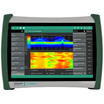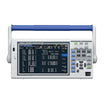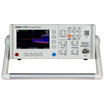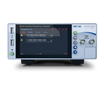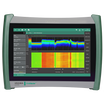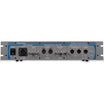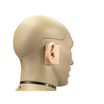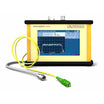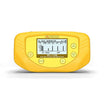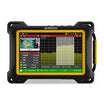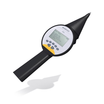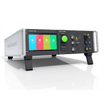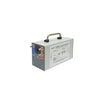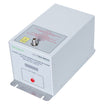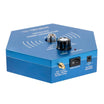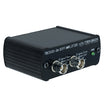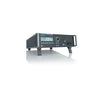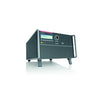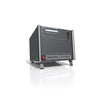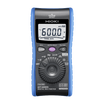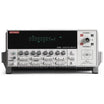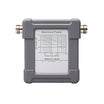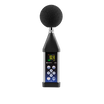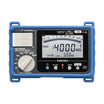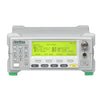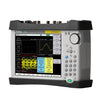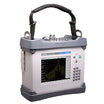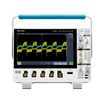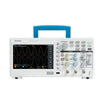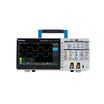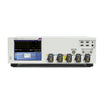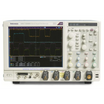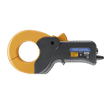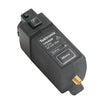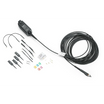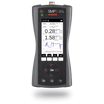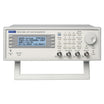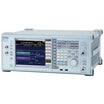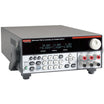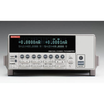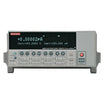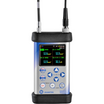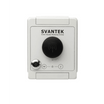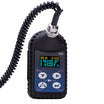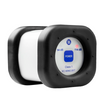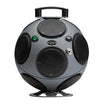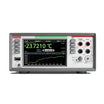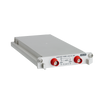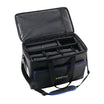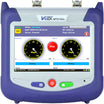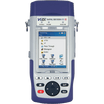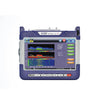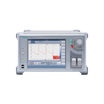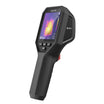Hele kroppen vibrationer
Hele kroppen vibrationer er mekaniske vibrationer, der trænger ind i den menneskelige krop i frekvensområdet 0,1 til 80 Hz. En typisk kilde til hele kroppen vibrationer er køretøjer, hvor vibrationer overføres til den menneskelige krop via sæder eller gulve. Hele kroppen vibration er en mulig sundhedsrisiko, især efter langvarig eksponering.
Hvad er en vibration?
Vibration er en oscillation bevægelse omkring en referenceposition. Normalt udtrykkes vibration i enheder af størrelse (m/s2) og frekvens (Hz). I maskiner genereres vibrationer af adskillige interne komponenter, der bevæger sig eller roterer ved forskellige frekvenser på samme tid.
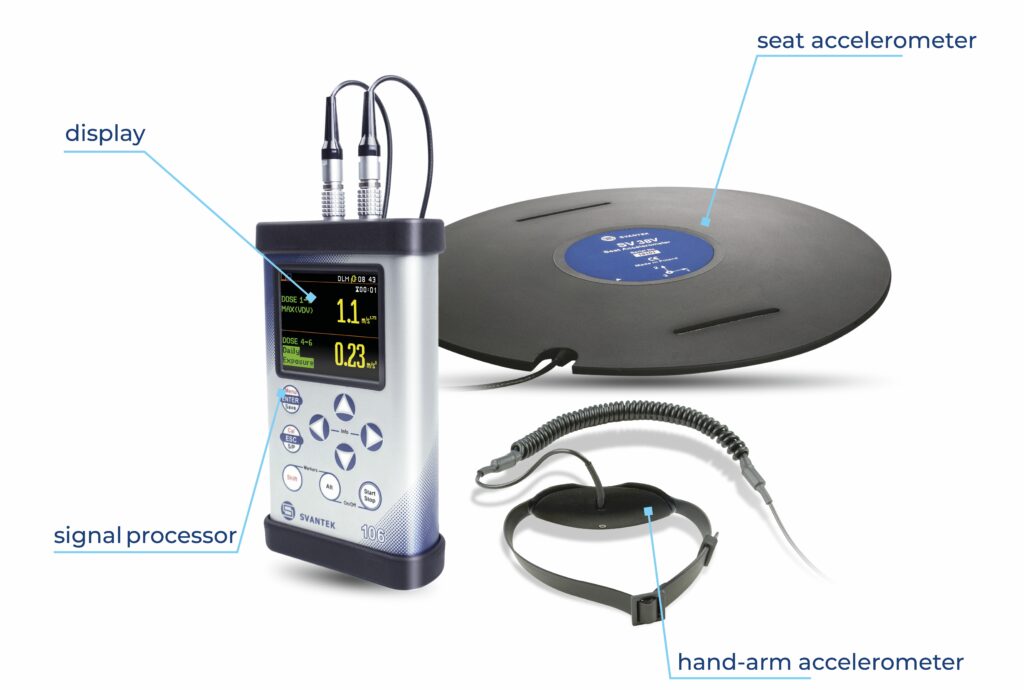
Hvad forårsager helkropsvibration?
Helkropsvibration (WBV) forårsages af arbejdspladsens maskiner og køretøjer og overføres til menneskekroppen gennem sædet eller gulvet. Eksponering for helkropsvibration er almindelig i erhverv som transport, byggeri, stenbrud eller landbrug. De mest fremtrædende eksempler på kilder er terrængående køretøjer, jetbåde, helikoptere og jetfly. Ofte er de stående operatører også påvirket af helkropsvibrationer, der overføres fra tungt udstyr via gulve.
Hvad er en helkropsvibrations effekt på mennesker?
Eksponering for helkropsvibration kan forårsage sundhedsproblemer. For eksempel kan eksponering for høje stød forårsage rygskader for en siddende person eller knæskader for en stående person. Risiciene stiger med højere vibrationsmagnituder og længere eksponeringstider. Den effektive måde at forhindre risikoen for helkropsvibration på arbejdet er at identificere vibrationskilderne ved målinger.
Hvad er de typiske helkropsvibrationsværdier, der produceres af køretøjer?
Grafen nedenfor viser typiske vibrationsaccelerationsværdier, der genereres af bevægelige køretøjer:

Hvordan identificerer en helkropsvibrationsmåling kilder?
Helkropsvibrationsmålingen identificerer kilder ved at plotte vibrationsamplituden vs. dens frekvens. I praksis anvendes et frekvensspektrogram til at vise vibrationsniveauet som en funktion af frekvensen. Identifikation af dominerende frekvenser muliggør at finde årsagen til uønsket vibration.
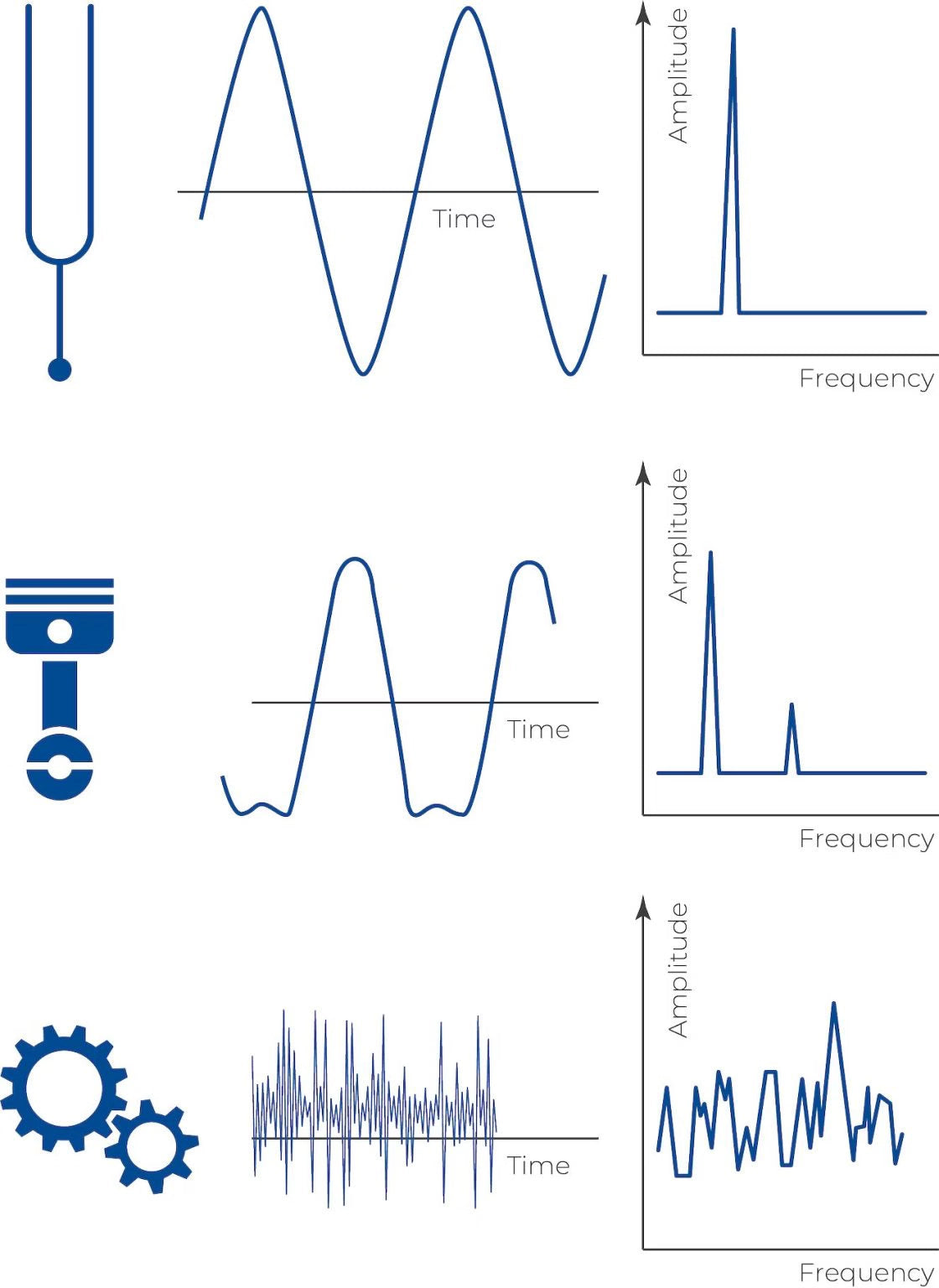
Vurdering af eksponering for helkropsvibration
Vurdering af eksponering for helkropsvibration er baseret på den europæiske “Vibrationsdirektiv” (2002/44/EF), der sætter grænser for daglig vibrationseksponering for at reducere risikoen for helkropsvibrationssygdom. Baseret på direktivet har alle EU-lande vedtaget love for at beskytte arbejdstagere mod farerne ved helkropsvibrationer.
Hvad er grænserne for helkropsvibration?
EU's vibrationsdirektiv for helkropsvibrations daglige eksponering A(8) grænseværdi er 1,15 m/s² (eller en VDV på 21 m/s1.75). Derudover er 0,5 m/s² en daglig eksponeringsaktionsværdi grænse (eller VDV vibrationsdosisværdi på 9,1 m/s1.75).
0.5
en daglig eksponeringsaktionsværdi (m/s²)
1.15
en daglig eksponeringsgrænseværdi (m/s²)
Hvad er grænserne for helkropsvibration?
EU's vibrationsdirektiv for helkropsvibrations daglige eksponering A(8) grænseværdi er 1,15 m/s² (eller en VDV på 21 m/s1.75). Derudover er 0,5 m/s² en daglig eksponeringsaktionsværdi grænse (eller VDV vibrationsdosisværdi på 9,1 m/s1.75).
0.5
en daglig eksponeringsaktionsværdi (m/s²)
1.15
en daglig eksponeringsgrænseværdi (m/s²)
Hvordan beregnes eksponeringen for helkropsvibration?
For at beregne den daglige eksponering for helkropsvibration A(8) (eller VDV) kræves to værdier: vibrationsmagnituden og den tid, hvor personen er udsat for vibration. Medmindre vibrationsmålingen dækker hele arbejdsdagen, vurderes eksponeringens varighed normalt i interviews med arbejdstagere og deres tilsynsførende.
Formel for eksponering for helkropsvibration
Formlen for at opnå eksponeringen for helkropsvibration A(8) tager den maksimale vægtede vibrationsmagnituden af tre akser og multiplicerer den med kvadratroden af eksponeringens varighed divideret med referenceperioden på 8 timer:
A(8)= a_wmax*√(Te/T8)
Hvad er en vægtet vibration?
Vægtet helkropsvibration er en vibration med anvendte frekvens-vægtede filtre, der fremhæver frekvenser, der er særligt skadelige for menneskekroppen.
Hvad er en vibrationsmagnitud?
Helkropsvibrationsmagnituden (aw) opnås ved målinger. Aw-værdien er den frekvens-vægtede acceleration målt i tre retninger (aksen X, Y, Z). Da de horisontale vibrationer er mere skadelige, ganges de to laterale akser X og Y med 1,4.
For den vertikale z-akse vibration er faktoren 1,0. For at opnå A(8) vibrations eksponering vælges den højeste aw af de tre ortogonale akser (1,4awx, 1,4awy eller awz).
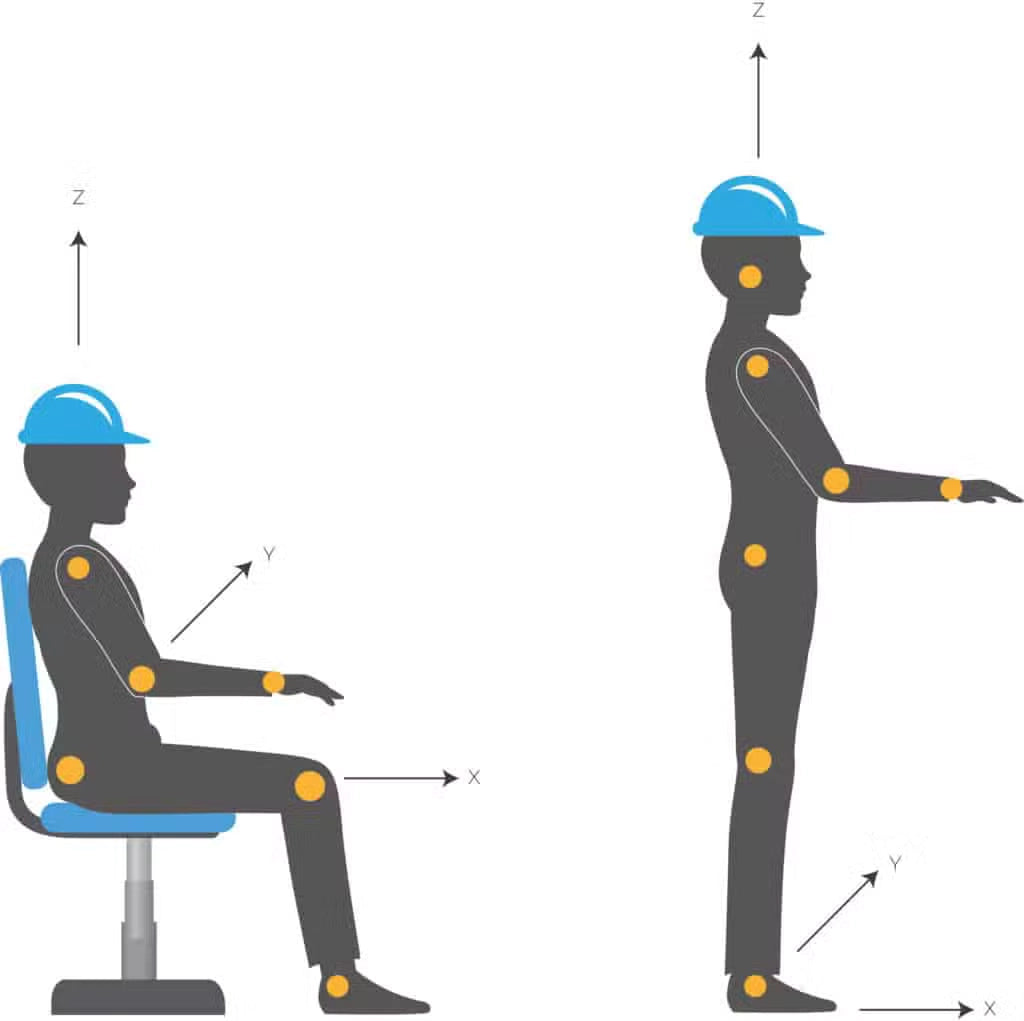
Hvordan måles helkropsvibration?
Målingen af helkropsvibration beskrives af den internationale standard ISO 2631-1. Under målingen vurderes vibrationsaccelerationen aw (i m/s2). Aw er en kvadratrods-gennemsnit (r.m.s) vibrationsmagnitud udtrykt i form af den frekvens-vægtede acceleration ved sædet af en siddende person eller fødderne af en stående person. En alternativ metode til at måle vibrations eksponering er vibrationsdosisværdien (eller VDV).
Hvad er en VDV vibrationsdosisværdi?
VDV vibrationsdosisværdien i m/s1.75 er et mål for vibrationsaccelerationen, der giver en mere præcis vurdering af de risici, der er forbundet med vibrationer, herunder stød. Ifølge ISO anvendes VDV til at vurdere A(8) for et signal med stød. Vurderingen bruger den højeste af de tre ortogonale aksers værdier (1,4VDVwx, 1,4VDVwy eller VDVwz).
Hvor længe skal vibrationsmålingen vare?
I henhold til ISO bør målingstiden for helkropsvibration dække den repræsentative arbejdsperiode. I praksis varer målingen den samlede tid af hver opgave, hvor arbejderen udsættes for vibrationer. Den britiske standard BS EN 14253:2003 foreslår at foretage mindst 2 timers målinger, men foretrækker målinger af en halv eller hel arbejdsdag, hvis muligt. Hvis længere målinger ikke er mulige, foreslås 20-minutters intervaller som minimum.
Hvad er en menneskelig vibrationsmåler?
En menneskelig vibrationsmåler er et dedikeret instrument til at måle daglig eksponering for helkropsvibration, ved brug af enten Daglig vibrations eksponering A(8) eller vibrationsdosisværdi (VDV). Menneskelige vibrationsmålere til helkropsvibration bør overholde ISO 8041:2005 specifikationerne for måleinstrumenter til helkropsvibration.
Hvad er en personlig helkrops vibrationsmåler?
En personlig helkrops vibrations eksponeringsmåler (PVEM) er et vibrationsmålesystem, der opfylder de relevante krav i ISO 8041-1 med den ekstra kapacitet til at overvåge personlige eksponeringer op til en fuld arbejdsdag. PVEM er designet til at måle og registrere personlige vibrations eksponeringer ved at registrere forekomster af eksponering og måle den tilknyttede menneskelige vibration sammen med eksponeringstiden. Målet er at overvåge menneskelig eksponering for vibration over lange tidsperioder, f.eks. hele arbejdsdagen i henhold til ISO 2631-1.

SVANTEK SV 106D – Menneskelig vibrationsmåler & Analysator
Hvad er kalibreringens rolle i helkropsvibrationer?
Kalibreringens rolle i helkropsvibration er at minimere måleusikkerheden. For at minimere usikkerheden er det vigtigt at udføre in-situ kalibrering af en menneskelig vibrationsmåler med en vibrationskalibrator.

